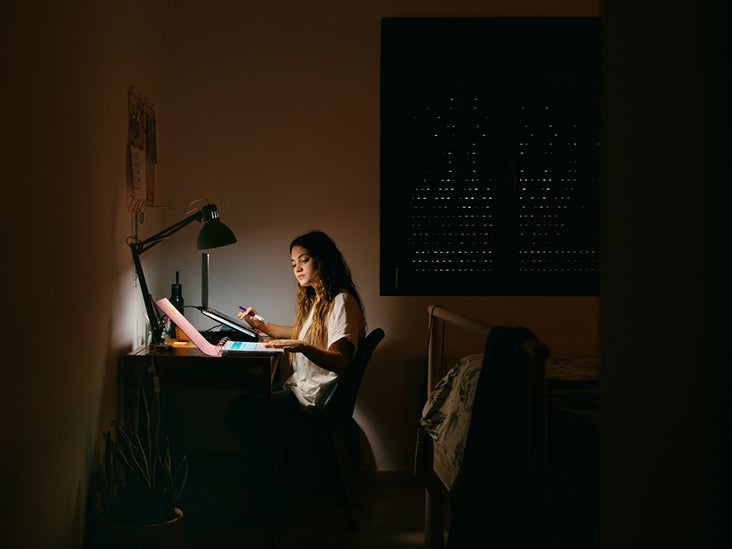
Eloisa Ramos/Stocksy
- Researchers from Brown College and the RIKEN Center for Mind Science present even further evidence on the correlation among slumber and finding out.
- Experts uncovered that processes specifically associated to mastering enable a individual consolidate for the duration of snooze what they discover while awake.
- They believe their conclusions provide additional evidence of a finding out-dependent design somewhat than a use-dependent model when it arrives to how snooze supports the studying process.
Keeping up late to cram for checks has develop into a standard section of the large university and college or university academic course of action. Now, scientists from Brown University in the United States and the RIKEN Centre for Mind Science in Japan say that this apply hinders somewhat than can help the mastering course of action.
Researchers located proof that suggests rest allows a individual absorb what they study even though awake through a procedure that is specially centered on understanding. This means that the a lot more sleep a individual receives, the extra time their mind has to system know-how and skills discovered although they are awake.
The final results from this analyze surface in The Journal of Neuroscience.
According to direct examine creator Dr. Yuka Sasaki, professor of cognitive, linguistic, and psychological sciences in the Neuroscience Graduate Program at Brown College, slumber facilitates understanding. Nevertheless, researchers experienced conflicting products to clarify how it does that — the use-dependent product and the understanding-dependent model.
The
For this review, Dr. Sasaki and her group needed to locate out which product was most probable to assist discovering. Scientists utilised two experimental sets of human volunteers, including a blend of both equally males and women.
During the initial experiment, participants figured out a
Contributors in the to start with group underwent a pre-teaching check, TDT education, and a publish-education test. A 90-moment nap adopted the second take a look at. Then facilitators performed a third tests session right after the nap to find out how substantially discovering participants retained.
Individuals in the next group were being also taught the TDT process and underwent tests both of those ahead of and just after a 90-moment nap. Even so, scientists structured this experiment in another way, leading to interference in the finding out process.
The scientists concluded that sleep facilitates learning employing the studying-dependent product. In specific, the investigation crew discovered contributors in the to start with experimental group showed enhancements in their grasp of the VPL task pursuing the 90-moment nap.
Conversely, these in the 2nd experimental team confirmed tiny to no improvement thanks to the placement of the interference ailment in their teaching.
In addition, when analyzing mind waves when the members were being napping, researchers identified two types of brain signaling — theta activity in the course of swift eye motion (REM) snooze and
Theta action in the brain relates to finding out and working memory. Sigma activity — also known as “snooze spindles” — plays an crucial function in consolidating extensive-time period memories.
Dr. Sasaki believes this analysis may possibly motivate variations in how finding out can take position in colleges. “The exploration indicates that studying just after sleep is advantageous for discovering to be increased and secured,” she explained to Clinical News Today.
“However, if educational institutions incorporate naps soon after each class, then the circadian rhythm could possibly be [thrown off and] this would be a negative thought. On the other hand, if school hrs could be modified so that kids’ night sleep could be for a longer time, this might be wonderful.”
Dr. Stella Panos, neuropsychologist and director of neuropsychology for the Pacific Neuroscience Institute at Providence Saint John’s Wellbeing Centre in Santa Monica, CA, also spoke to MNT relating to this review. She thinks the results recommend having a distinct technique to discovering than what we are typically accustomed to.
“I consider about faculty students or large college college students,” she explained.
“When they are learning for a exam, they may remain up late or do an all-nighter pondering which is going to enable, whereas this [study] would suggest that really going to bed is going to facilitate and enable with the learning and consolidation.”
– Dr. Panos
Dr. Panos also mentioned that whilst clinicians have regarded about the correlation between slumber and well being disorders for quite a few decades, unique information on how slumber impacts memory are even now not totally recognised.
“The analyze implies that slumber plays a much more lively job in mastering and memory than we assumed in advance of, so it is really adding to some of our expertise about how sleep and memory are associated,” she included.
For upcoming methods in this analysis, Dr. Sasaki would like to examine other components of the mind all through rest. “We mostly analyzed the visual areas all through slumber,” she spelled out.
“It is nevertheless to be examined no matter if the locating could be generalized to any form of mastering. Visible finding out mostly includes the visual cortex, though motor understanding largely will involve the motor cortex. Depending on the involved neural networks, it may possibly be possible that the underlying mechanisms differ.”



More Stories
Unlock Brilliant Minds: How Homeschool Learning Inspires Confidence and Creativity in Every Child
Empower Your Child’s Confidence: Why a Self Paced Homeschool Program Changes Everything
Unlock Your Family’s Potential: Why Many Parents Find Homeschooling Easy and Rewarding